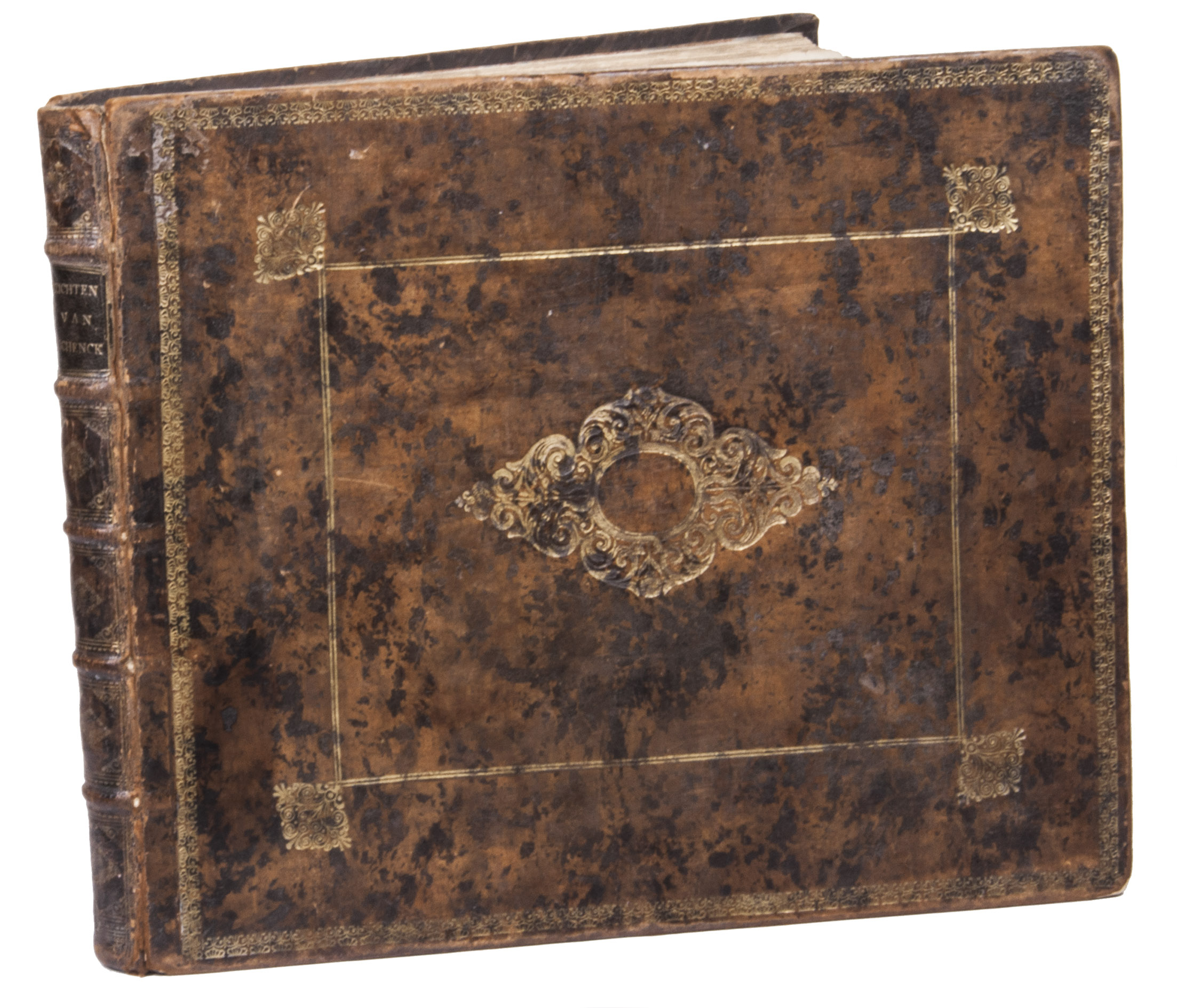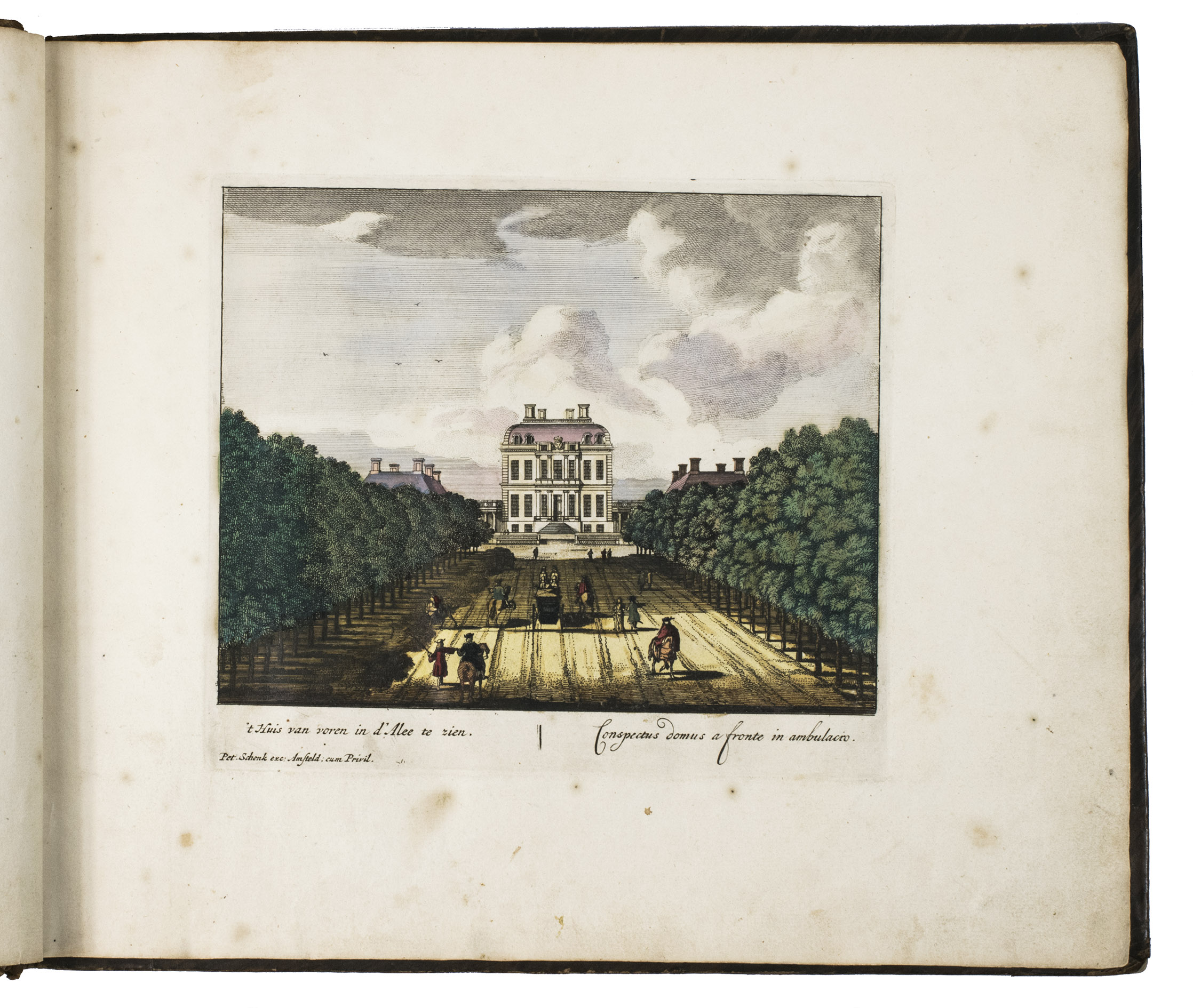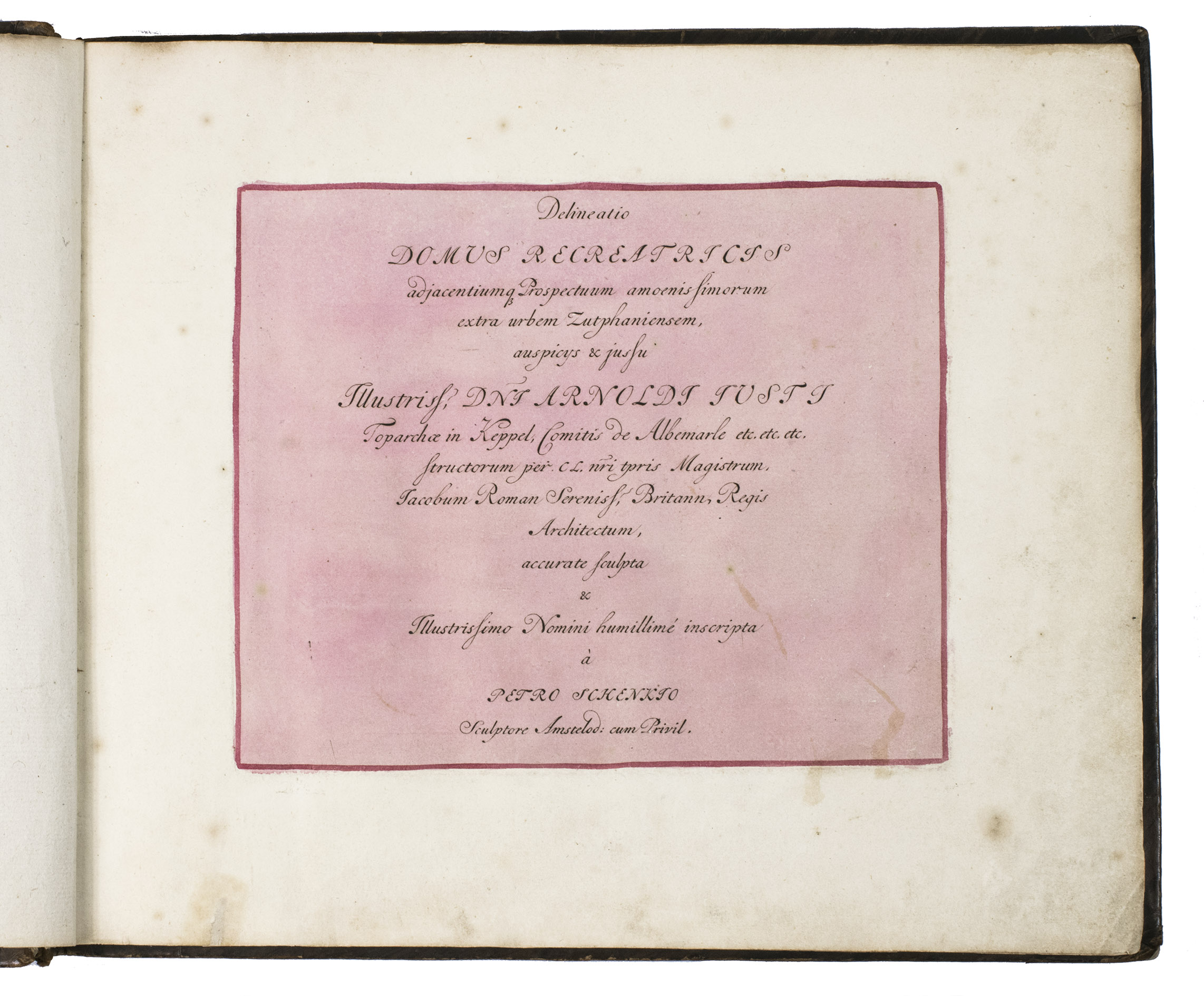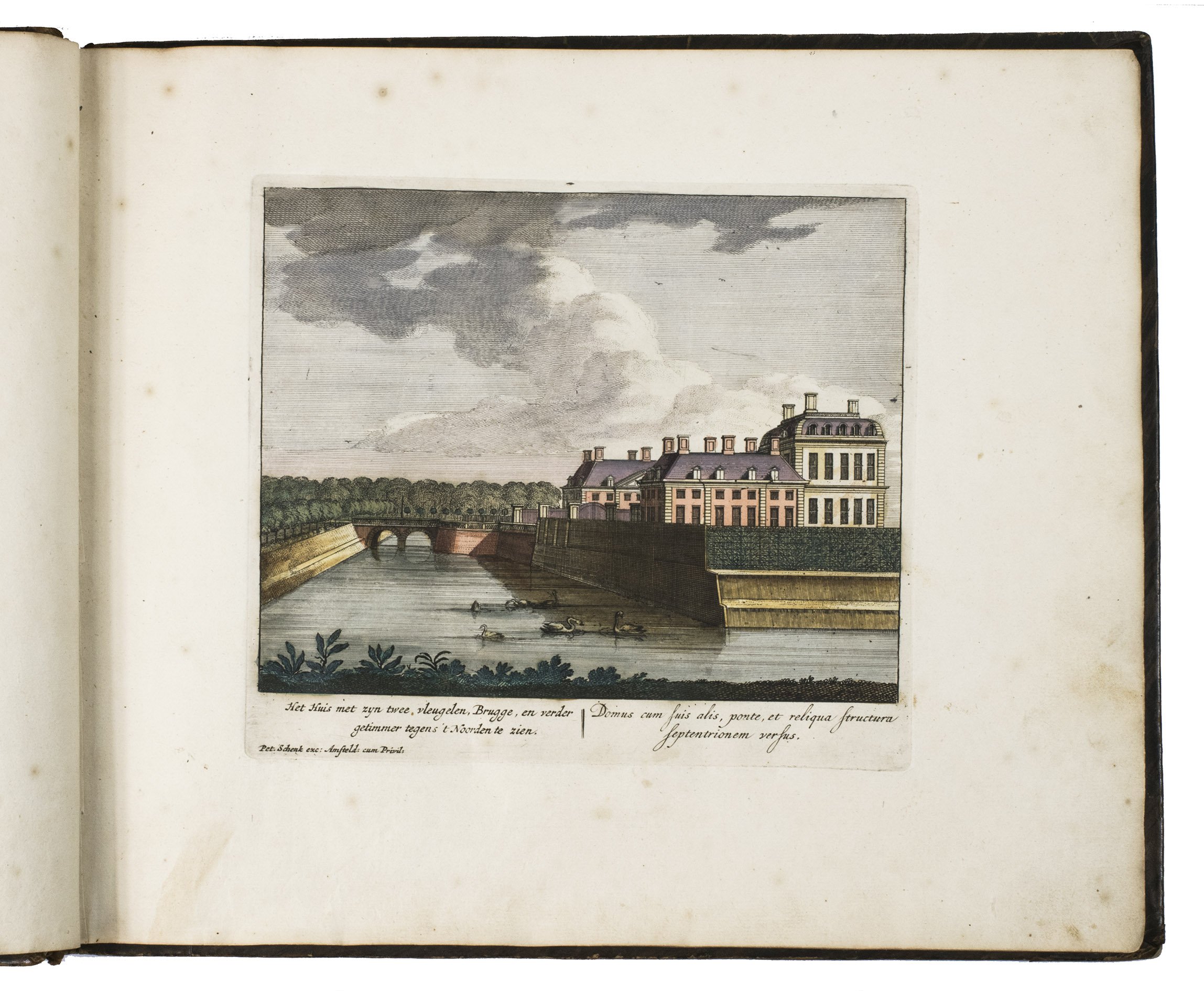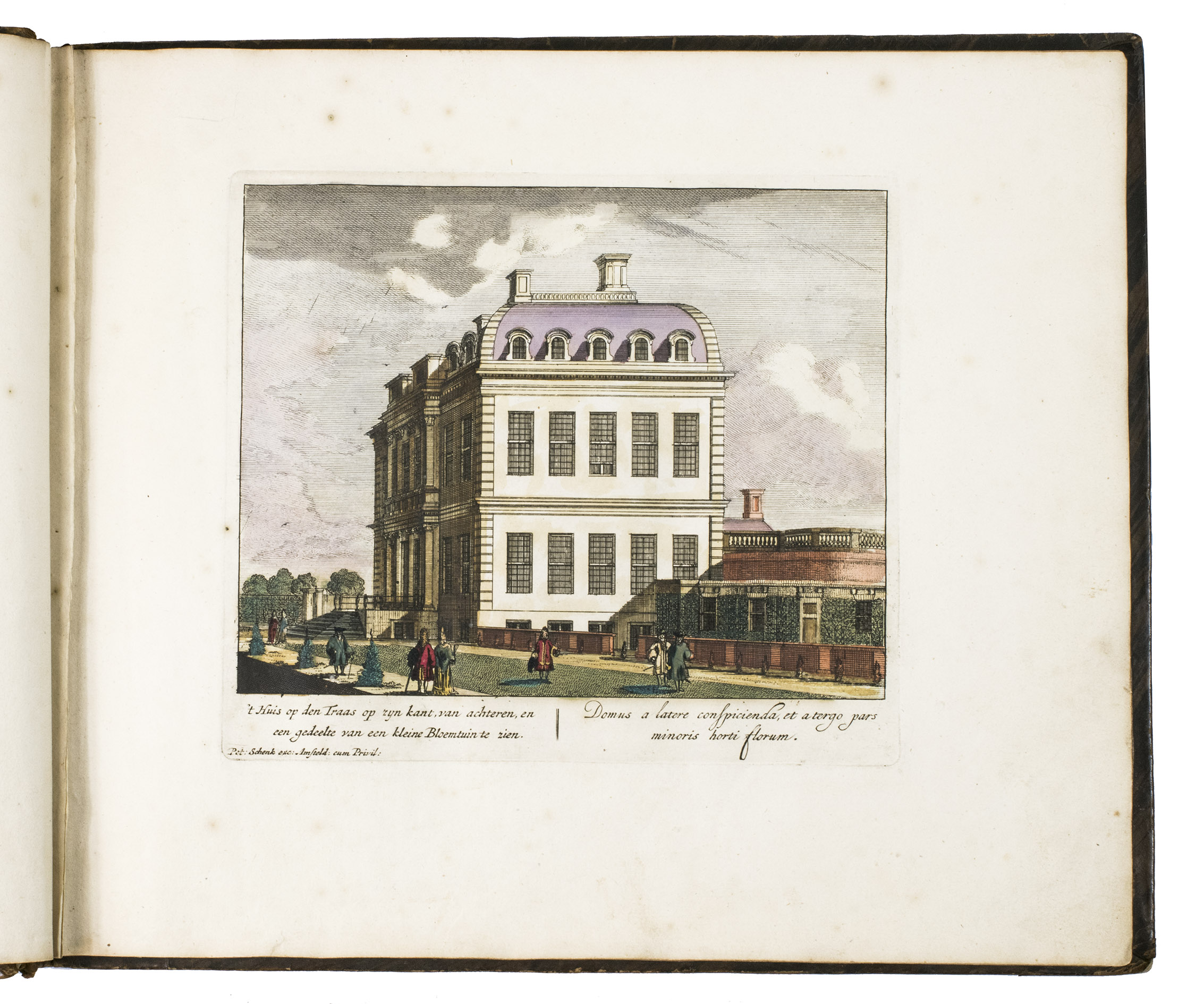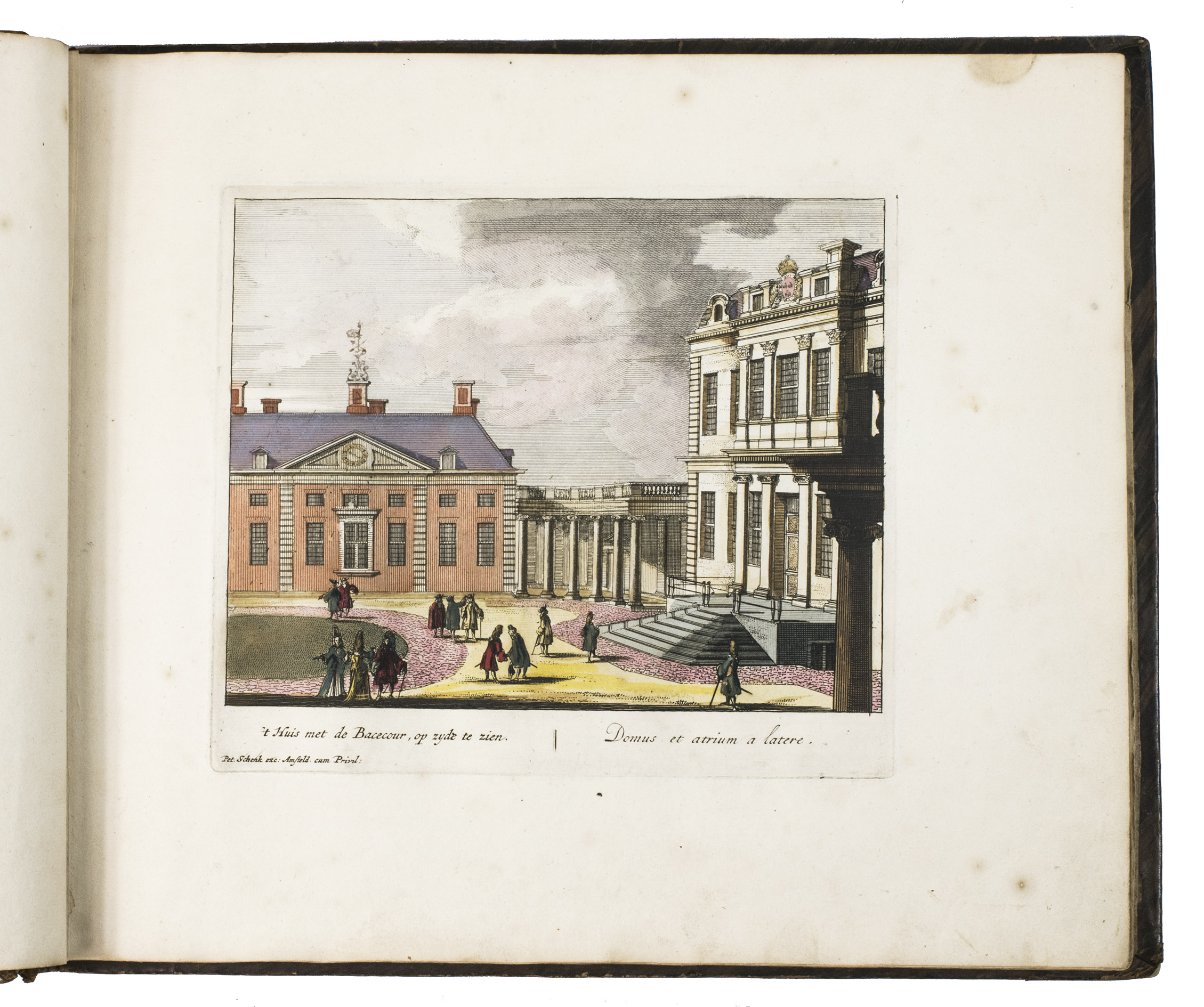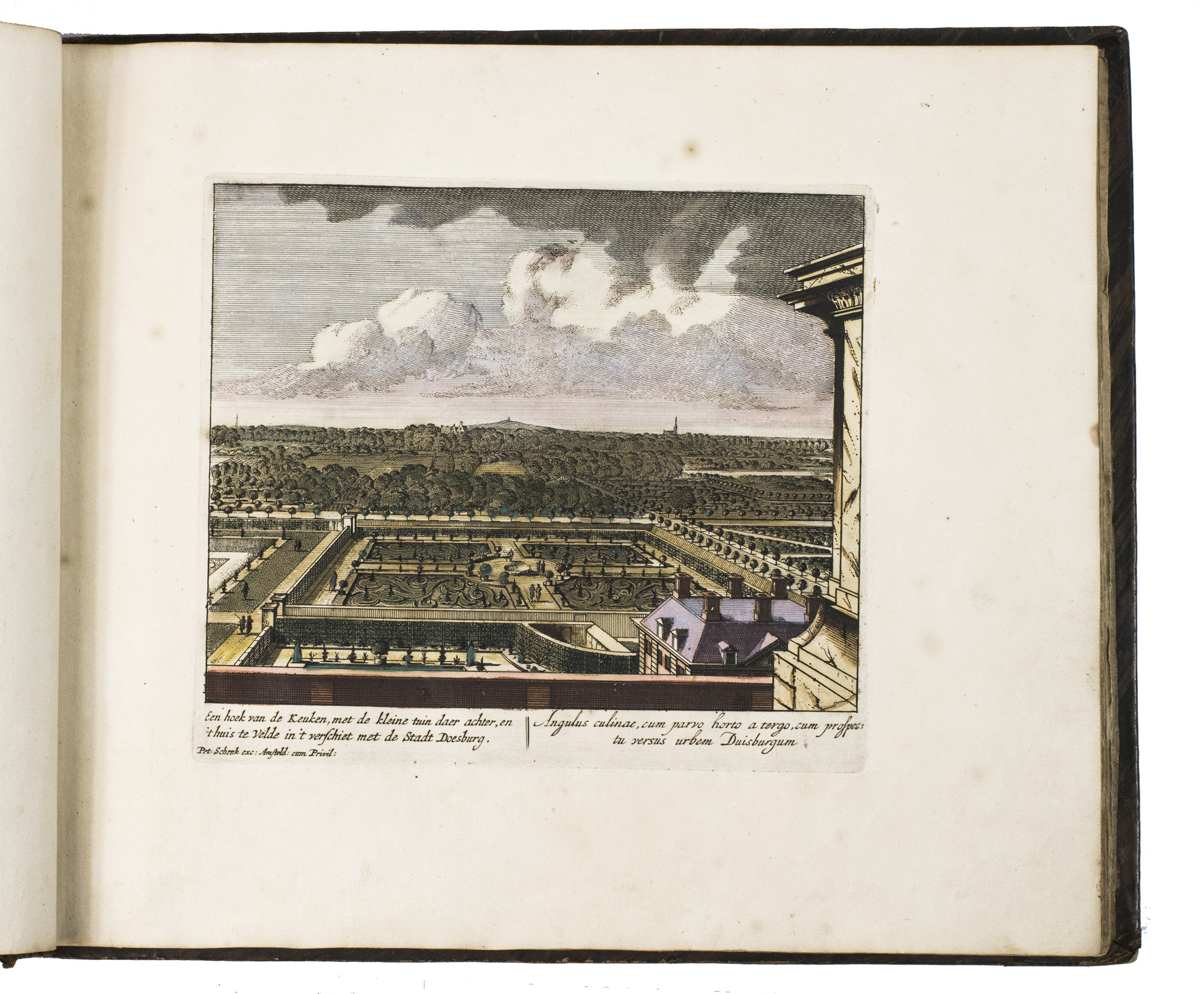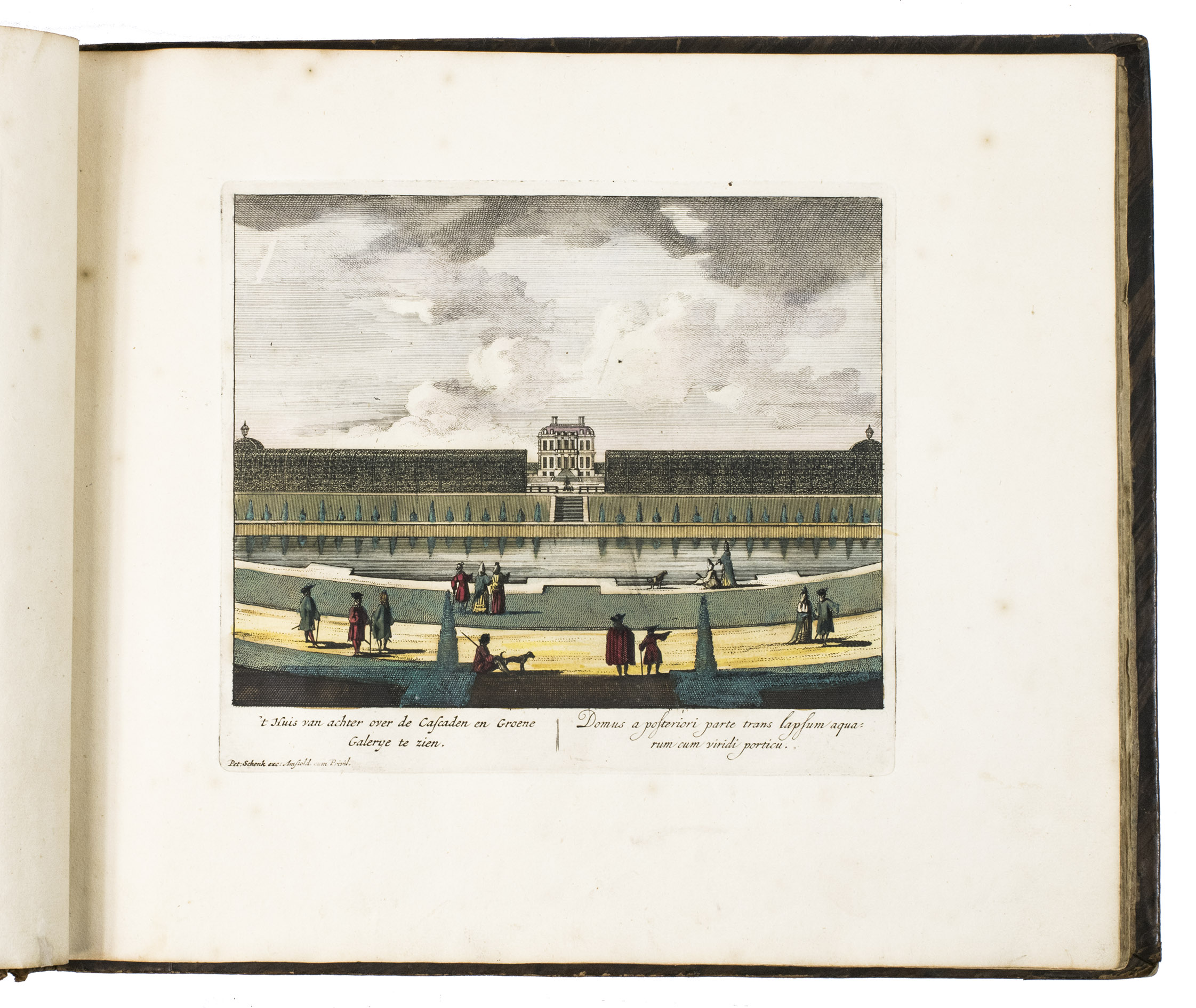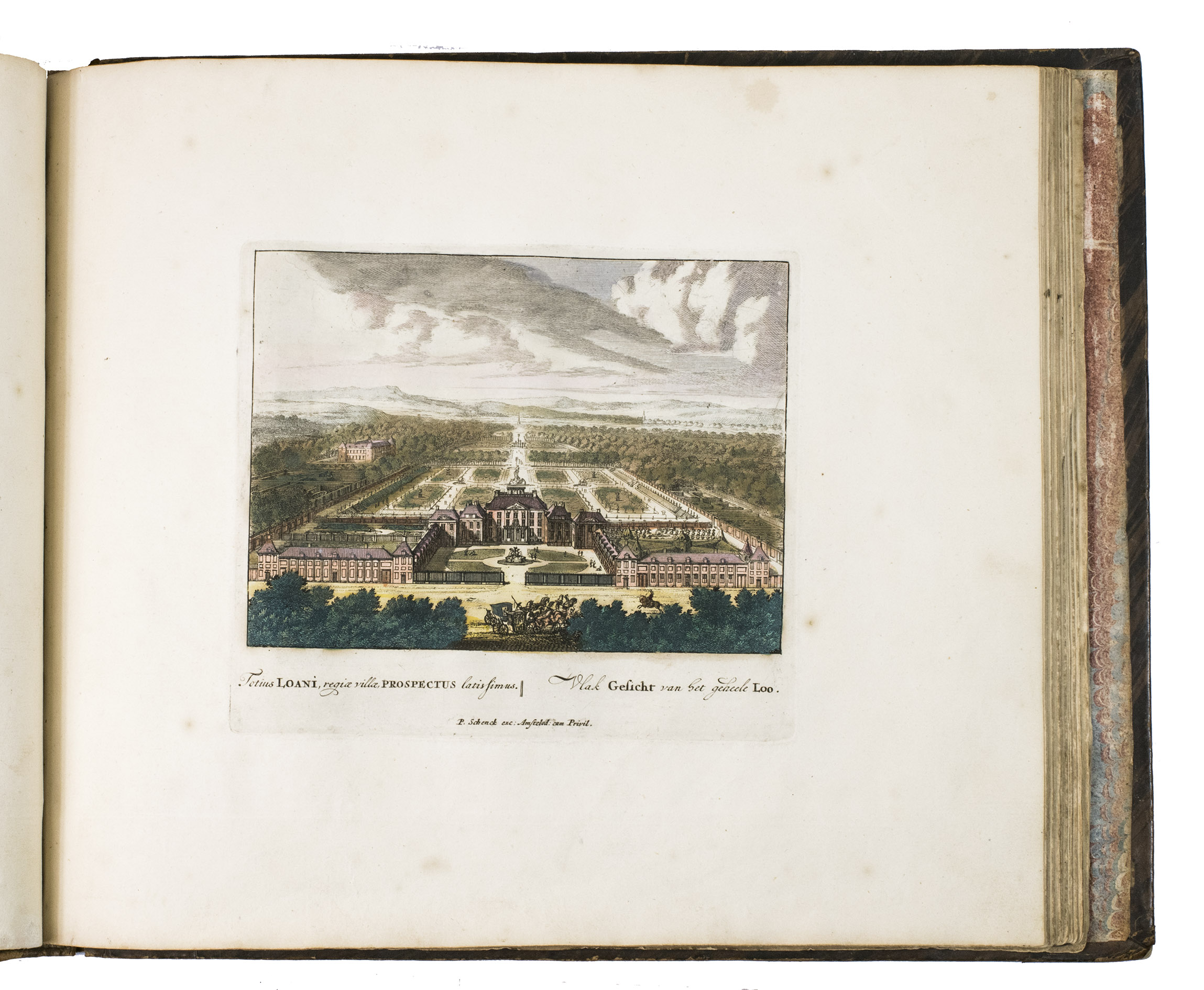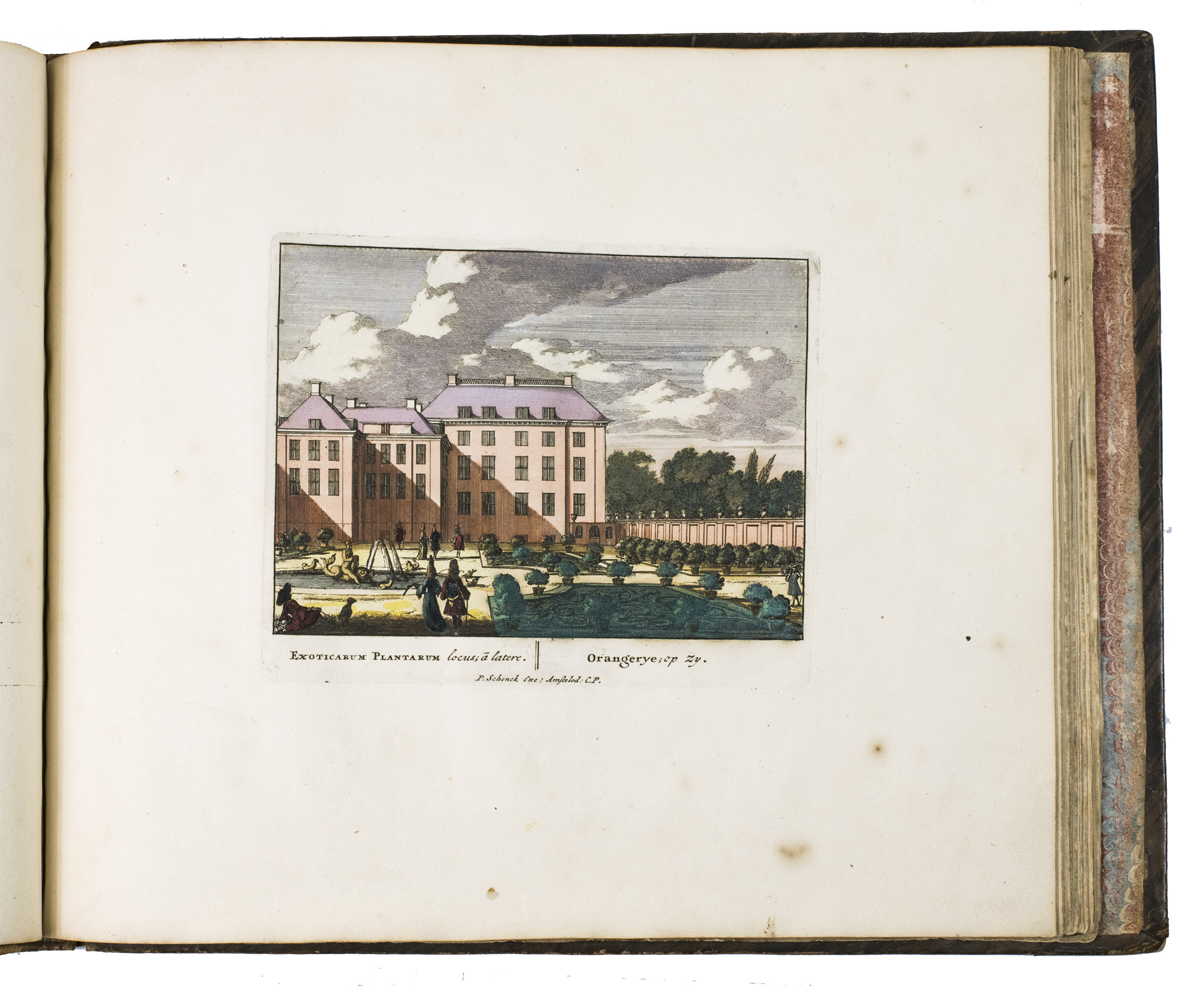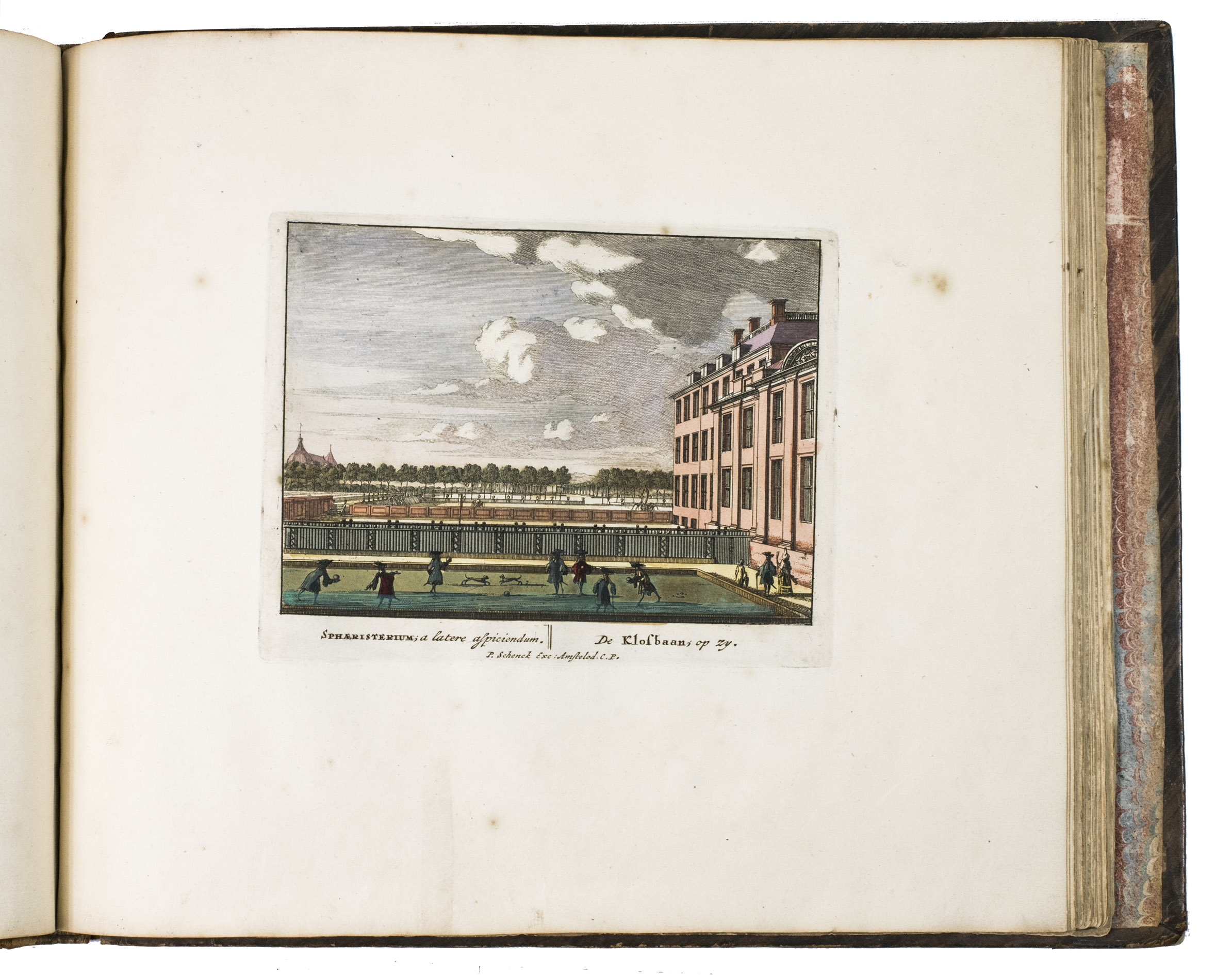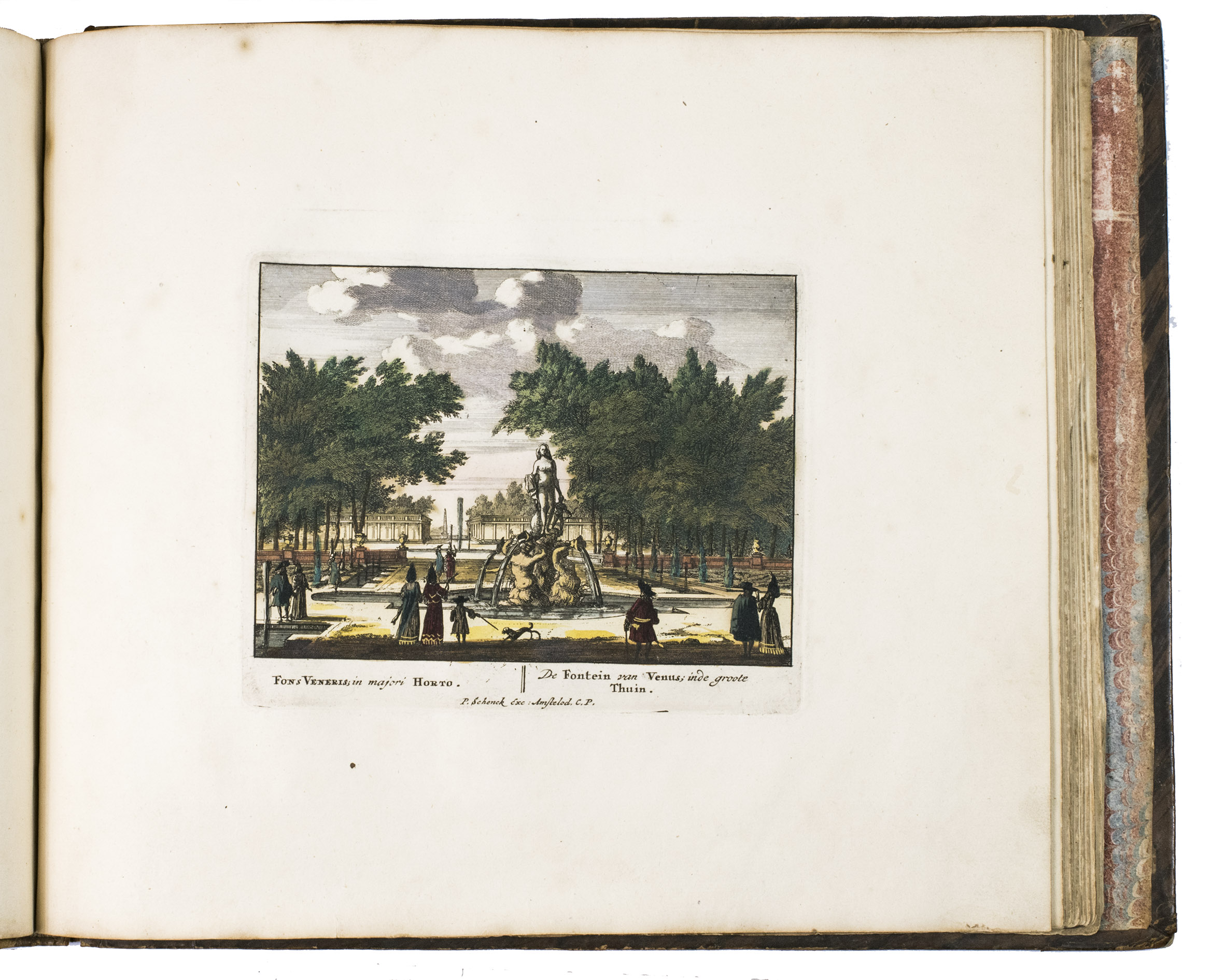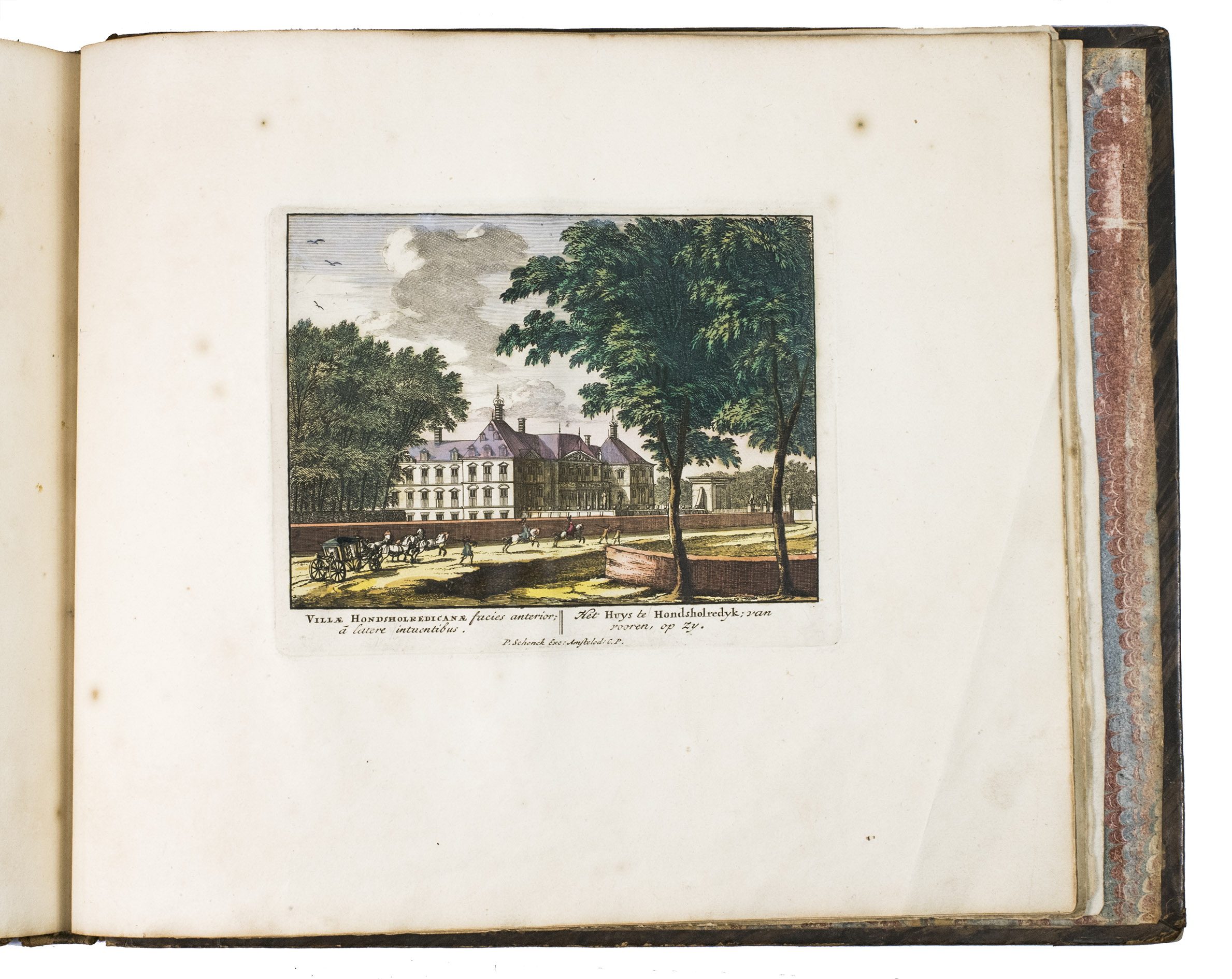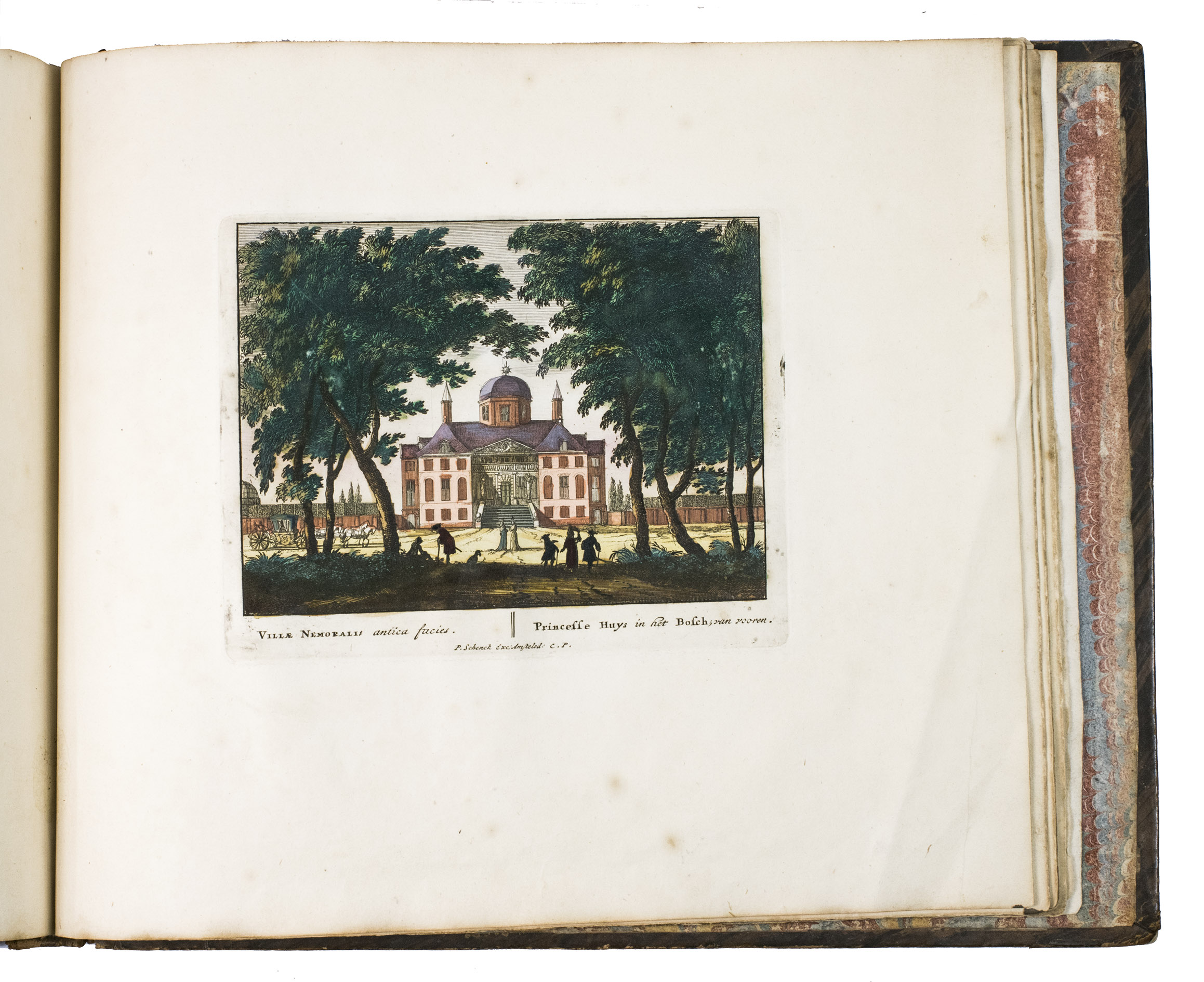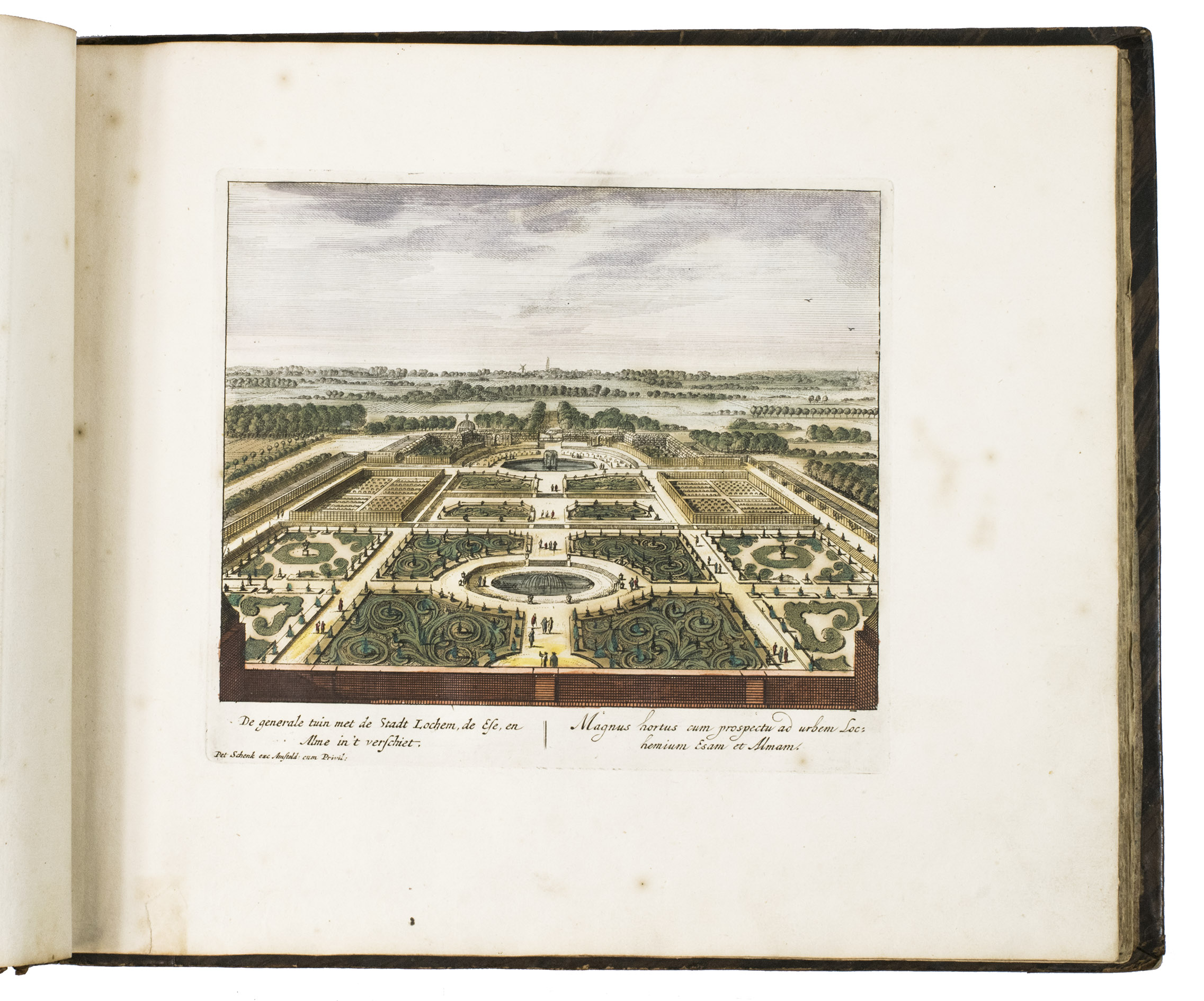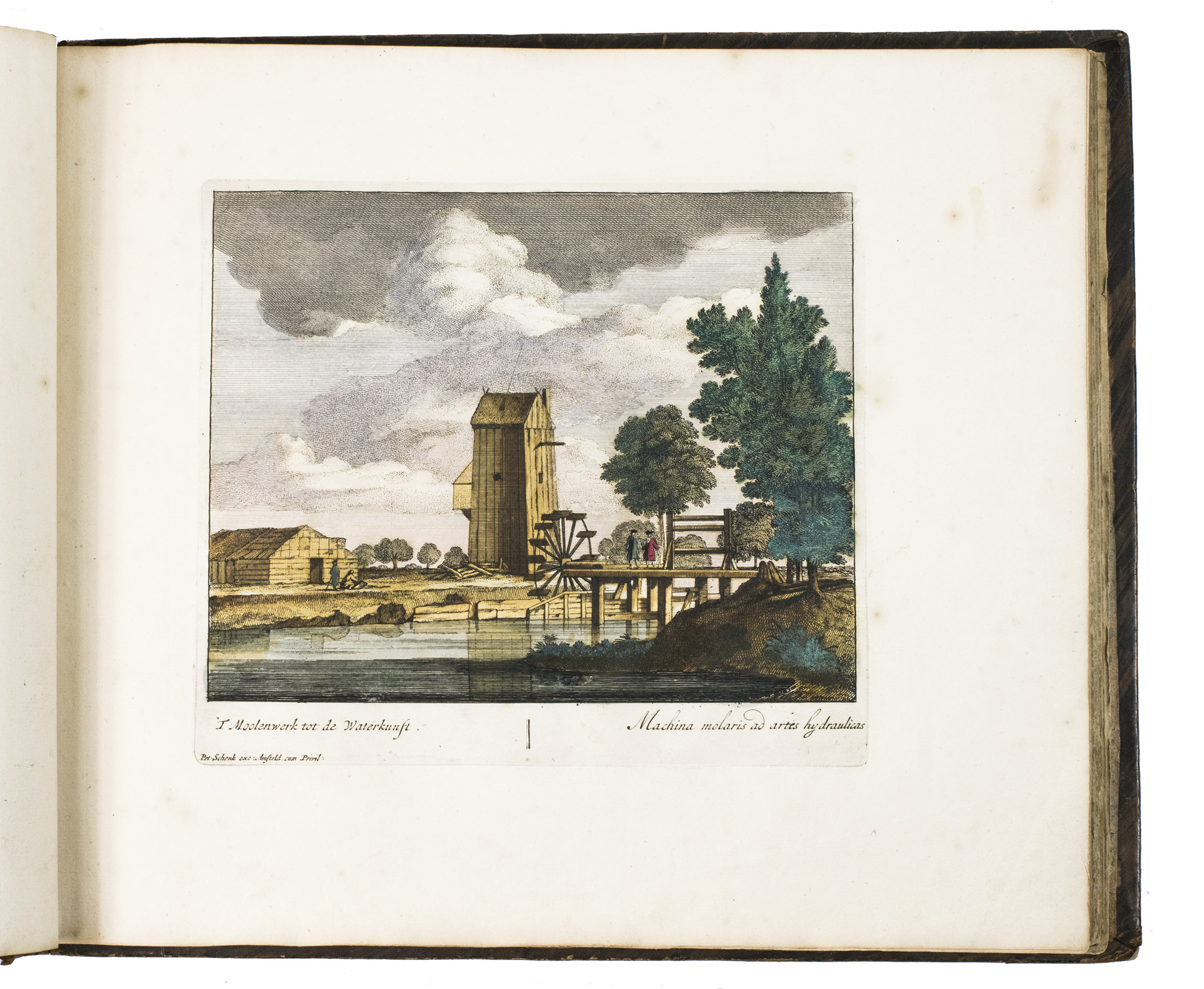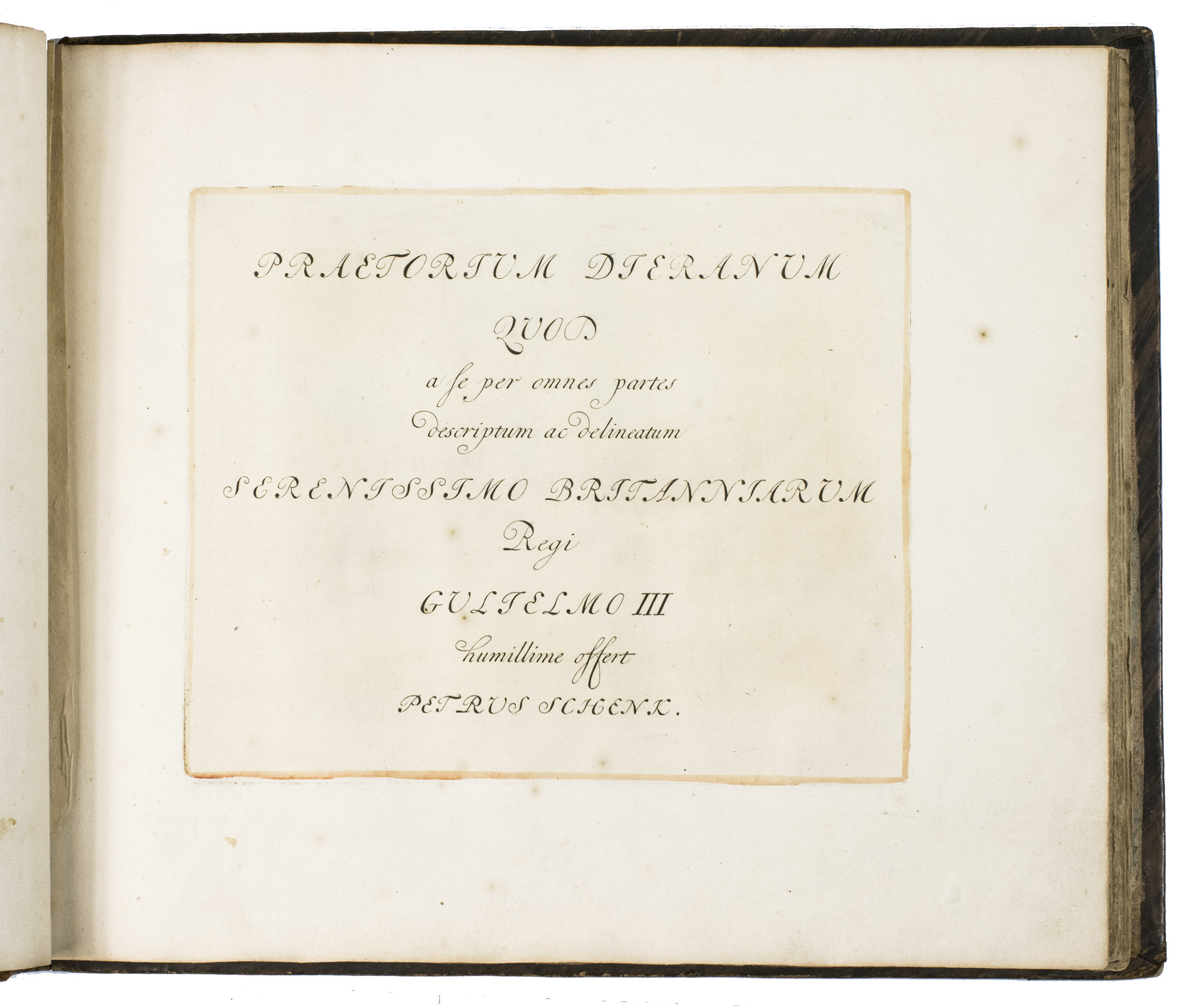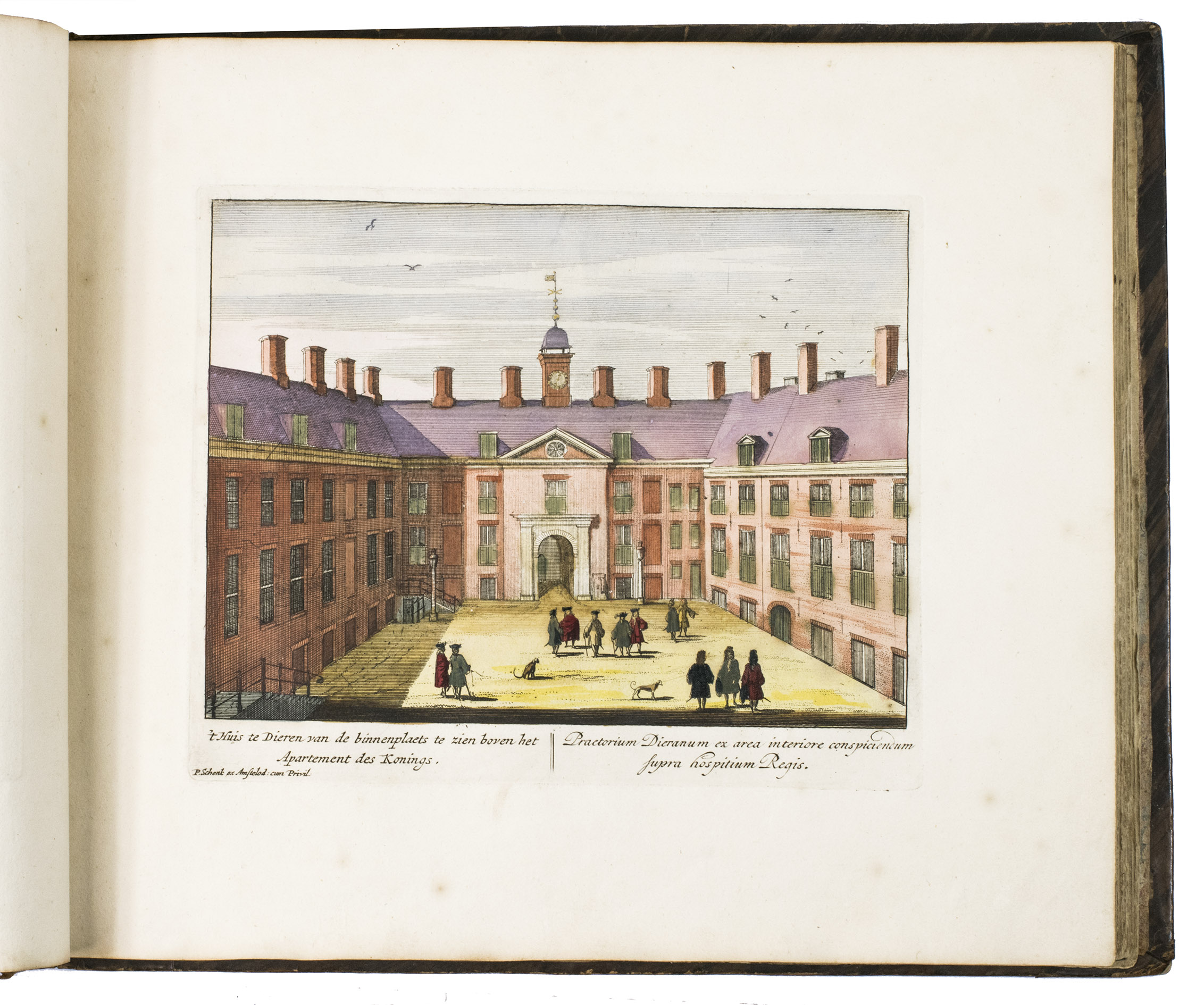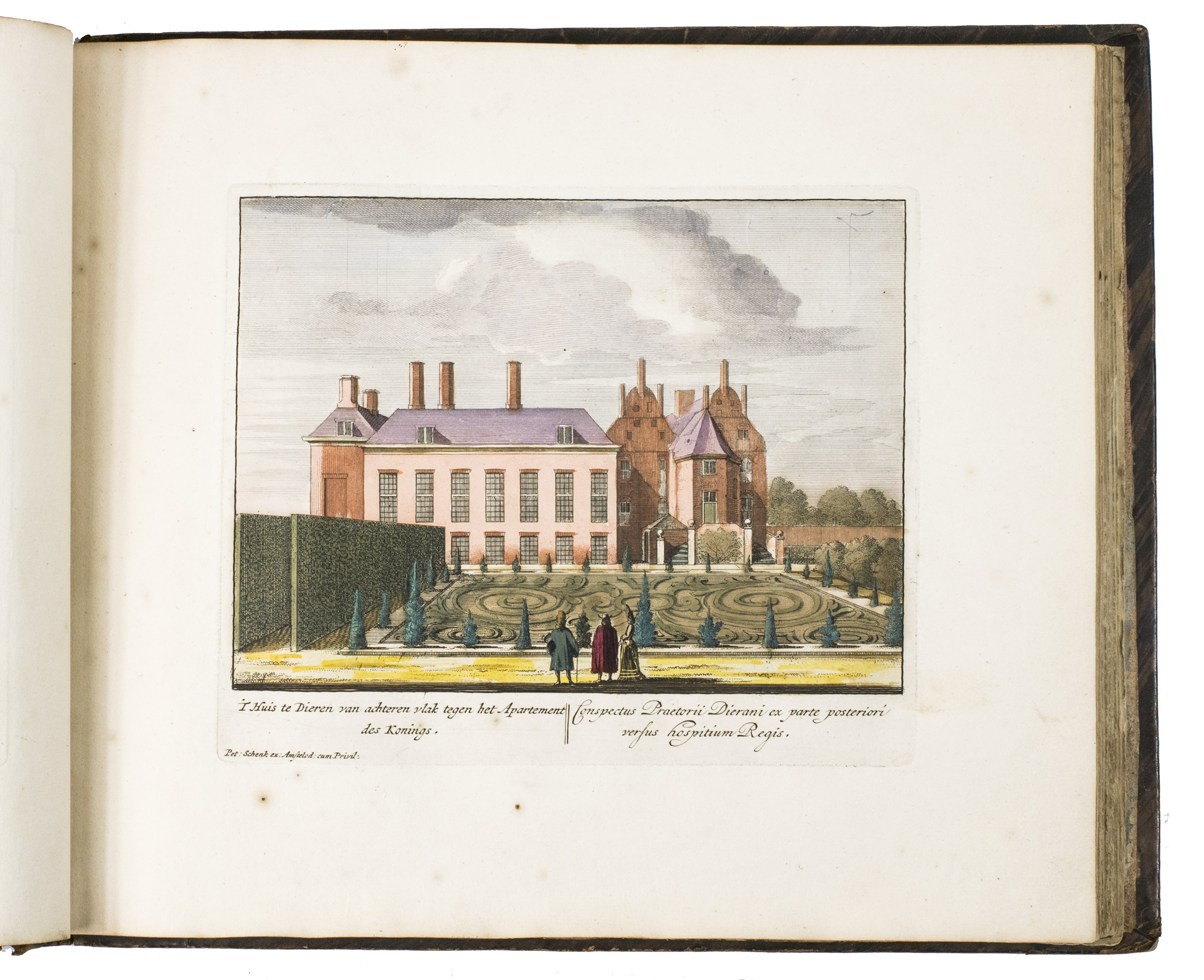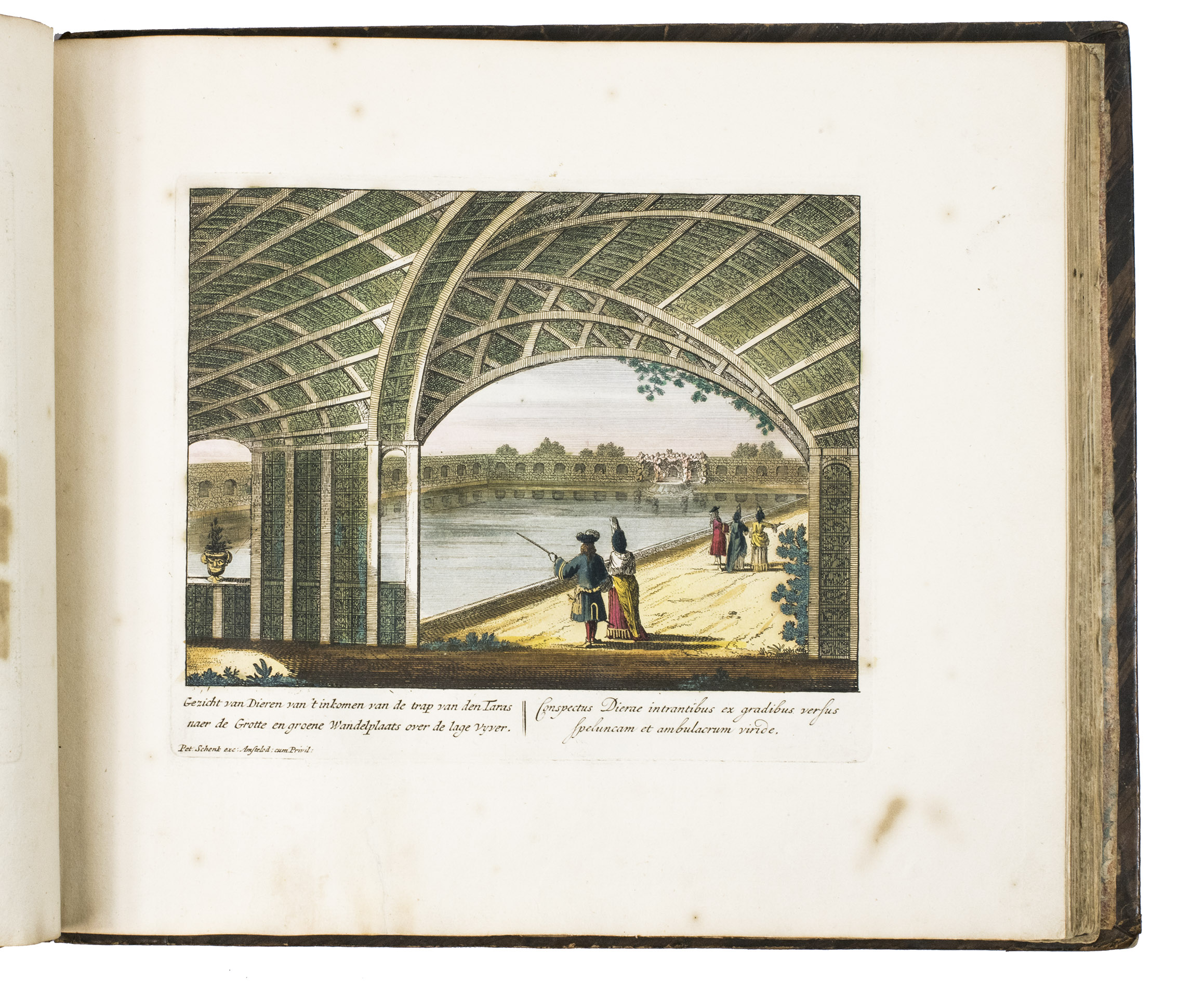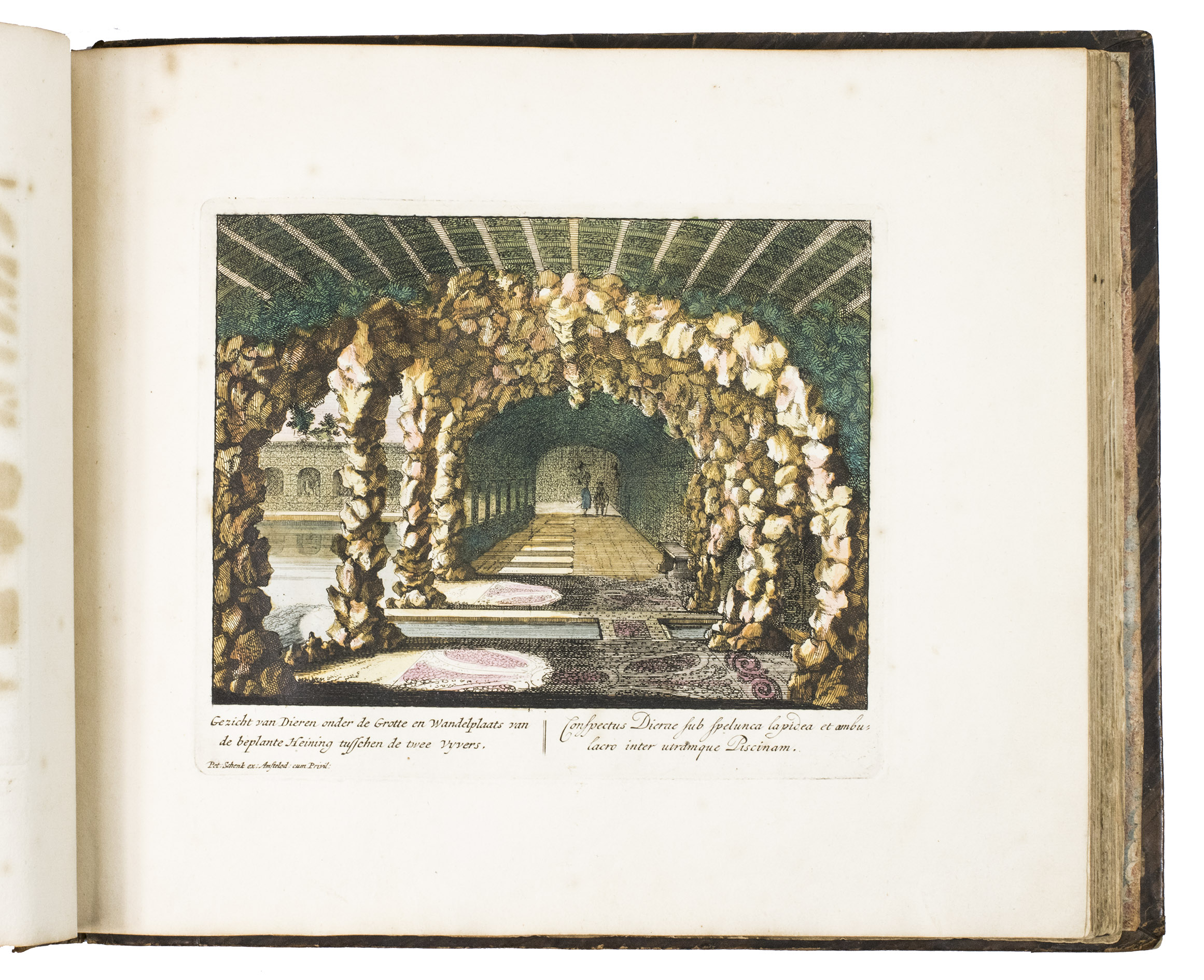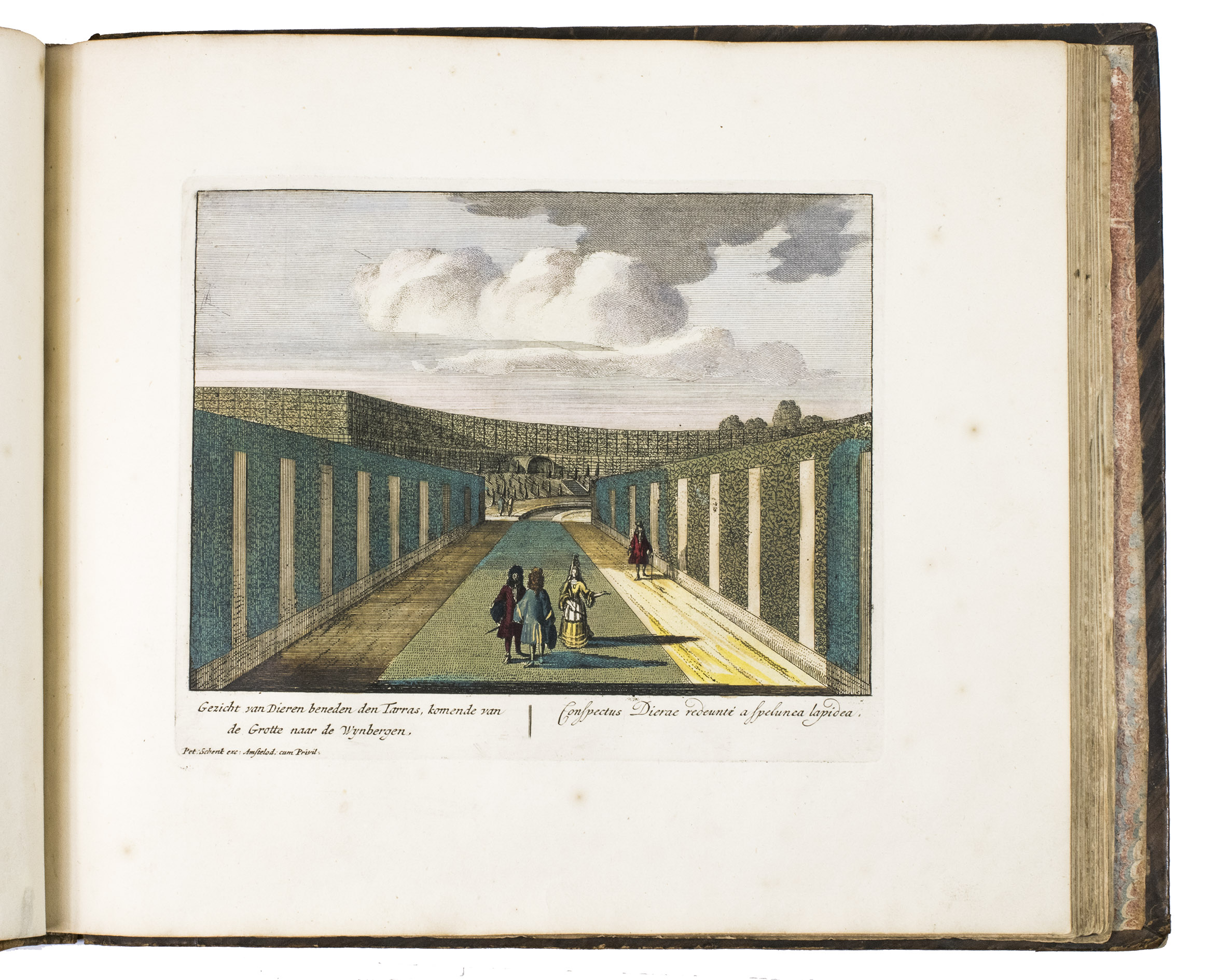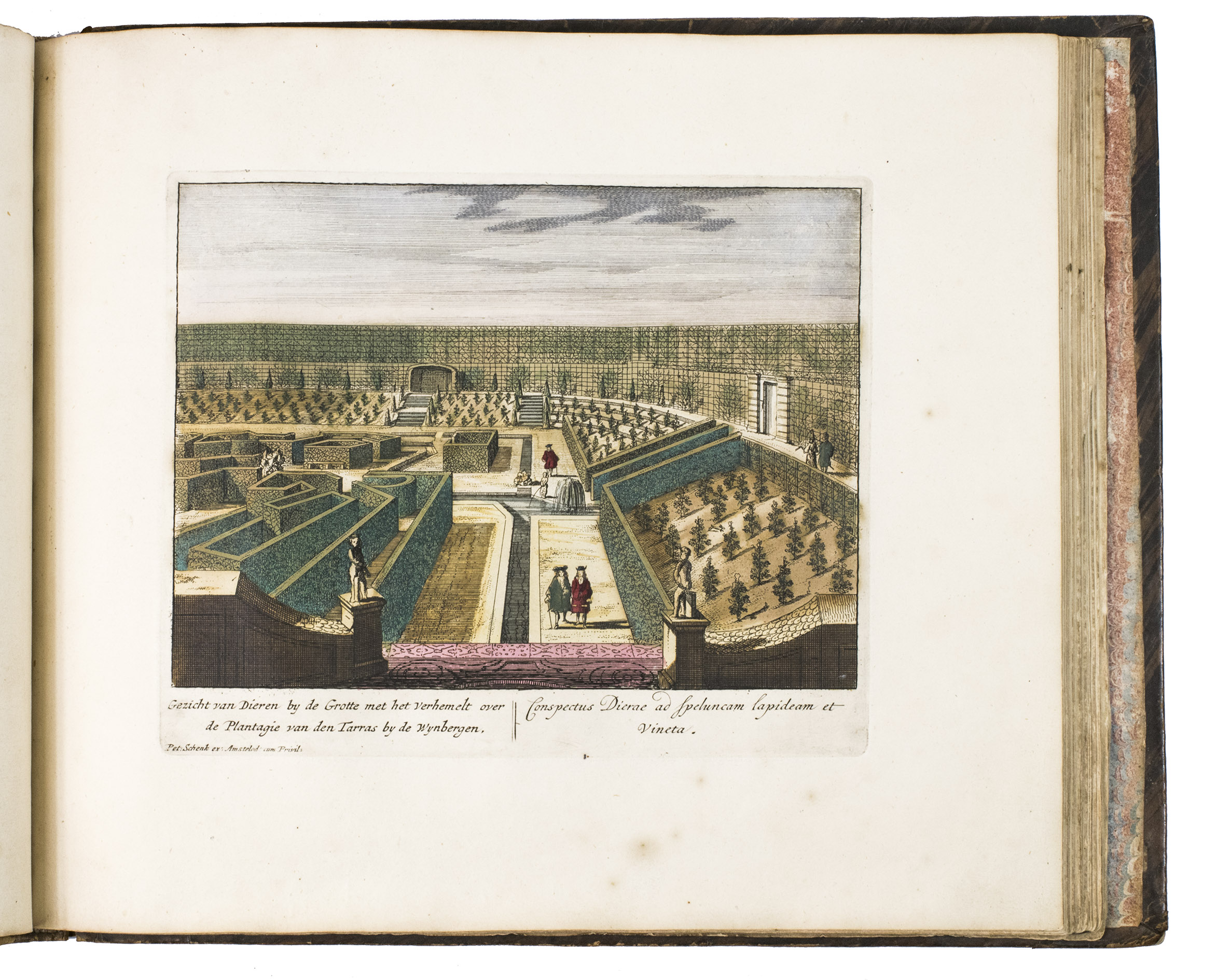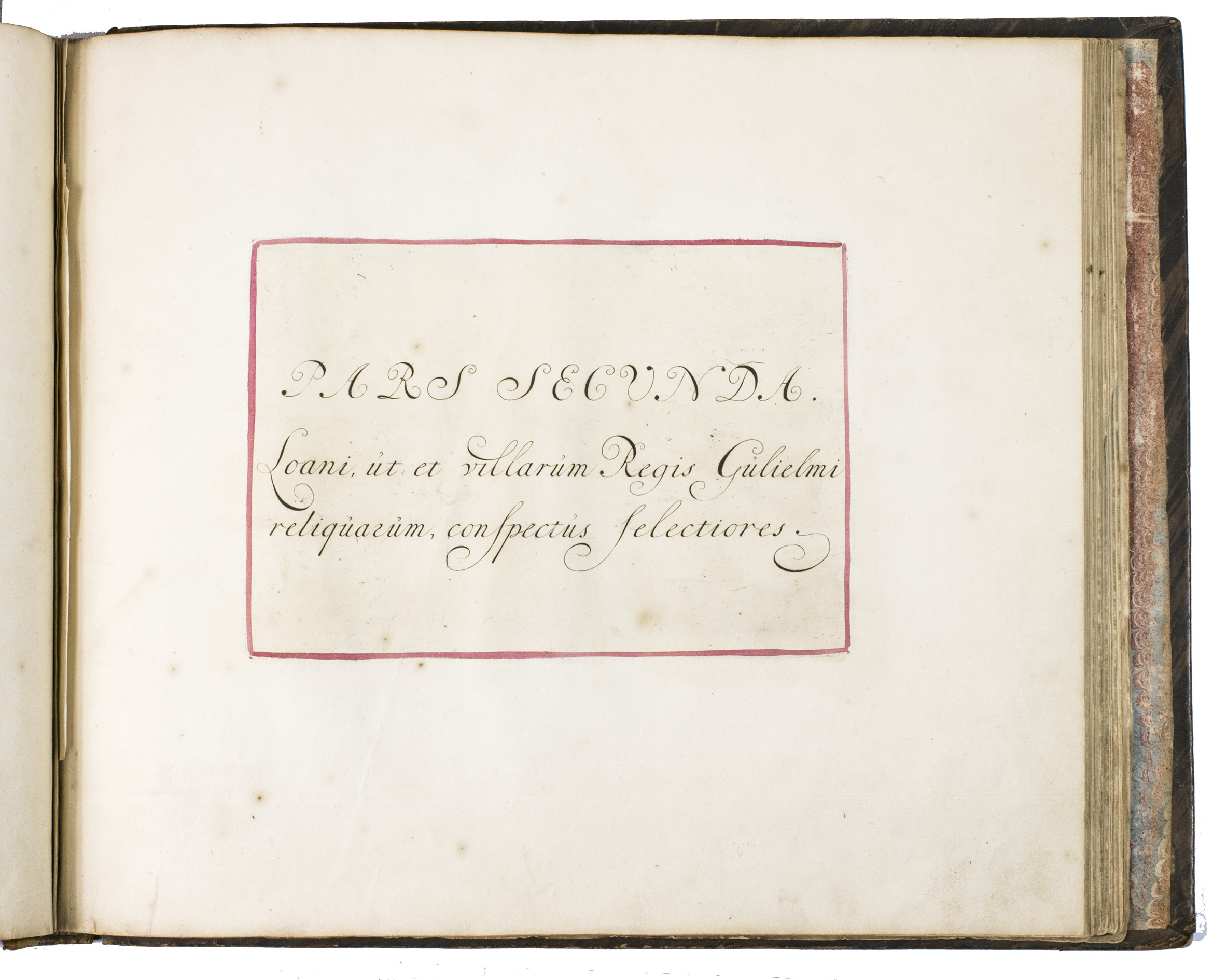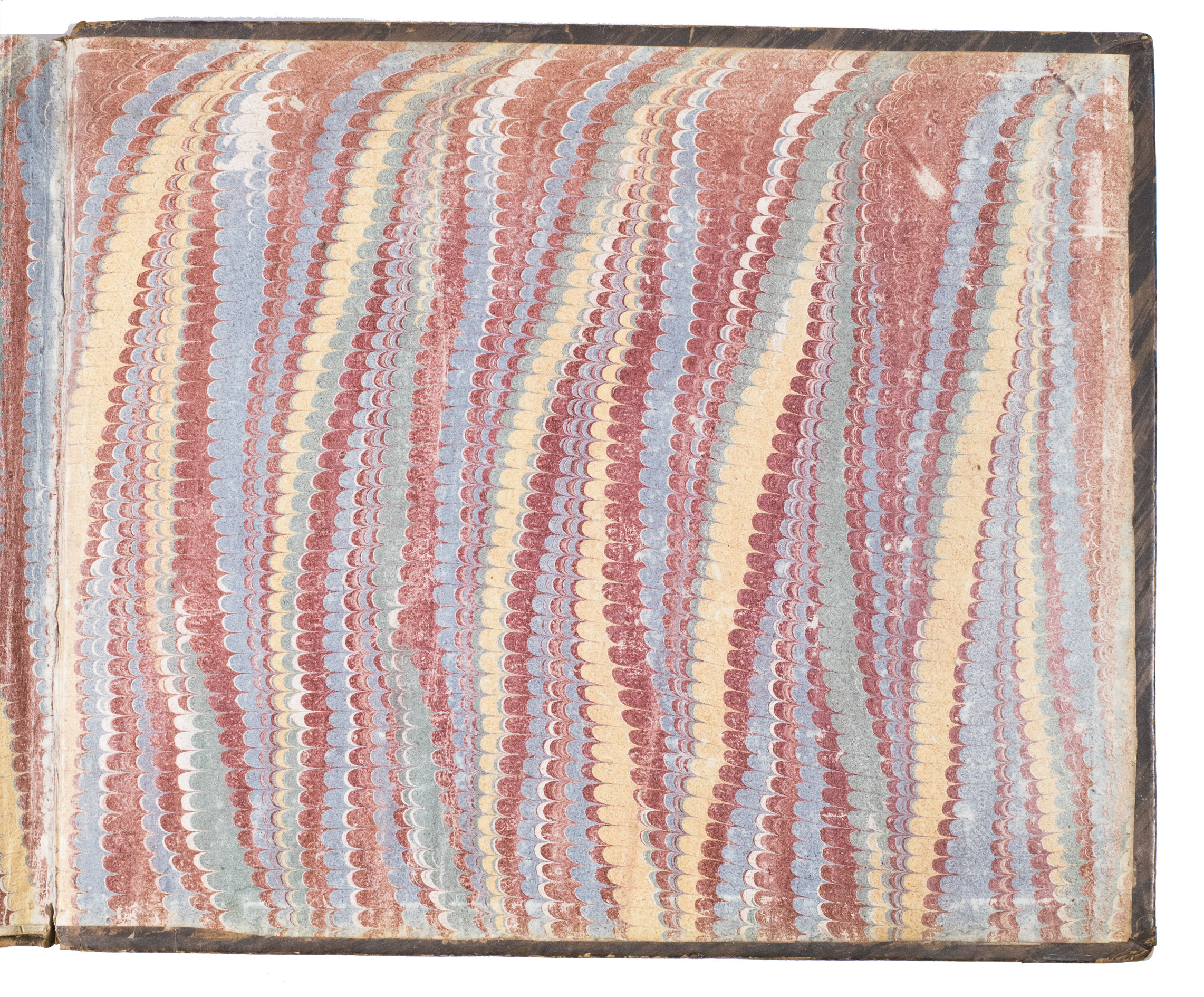SCHENK, Pieter.
Delineatio domus recreatricis adjacentiumque prospectuum amoenissimorum extra urbem Zutphaniensem ...
[Amsterdam], Pieter Schenk, [ca. 1702].
With:
(2) SCHENK, Pieter. Praetorium dieranum quod a se per omnes partes descriptum ac delineatum Serenissimo Britanniarum Regi Gulielmo III humillime offert Petrus Schenk.
[Amsterdam, Pieter Schenk, ca. 1700].
(3) CALL, Johannes van. Loani, ut et villarum Regis Gulielmi reliquarum, conspectus selectiores.
[Amsterdam, Pieter Schenck, ca. 1700]. 3 works in 1 volume. Oblong 4to (26.5 x 31 cm). With an engraved title page for each work, and 50 contemporary hand-coloured engraved plates. Contemporary gold-tooled mottled calf, with a black morocco title label lettered in gold on the spine, gold-tooled board edges, marbled endpapers, gilt edges. [16]; [14]; [23] ll.
€ 25,000
Magnificent large paper copy of series of views of some of the most sumptuous palaces and gardens of the 17th century. All the plates have been beautifully coloured by a contemporary hand. The work contains three different print series, depicting the most beloved houses and palaces of Stadholder/King William III (1650-1702) from various angles, as well as the gardens, fountains, and statuary. The 3 series were originally issued separately. The first 2, together with 4 other series, were reissued in the first part of Schenk's Paradisus oculorum in 1702, just before William of Orange passed away. However, most parts survive separately, and are now relatively rare.
Ad 1: A series of 16 views of the house and gardens of "De Voorst", the country estate of Arnold Joost van Keppel (1669/70-1718), Baron of Ashford, Margrave of Bury and Count of Albemarle, as well as a close friend of William III. The house was built by the architect Jacob Roman (1640-1716) in cooperation with Marot, who both also had been responsible for the design of Palace het Loo some years earlier. De Voorst was similar in design and was called "the Versailles of the Eastern Netherlands". It has functioned as a "Lieu de plaissance" where Van Keppel, together with William, received many guests. The house burnt down in 1943 but was restored in 2004-5.
The present copy lacks 1 plate, namely a view of the back of the house. However, this plate is by no means essential to get a good impression of this elegant country house in its finest days.
Ad 2: A series of 13 views of the second the favourite hunting seat of William III, " 't Hof van Dieren", located in Dieren. William's father, Stadholder William II, bought the house in 1647 and William III turned it into a royal home with extended and splendid gardens with terraces, lakes, grottos, fountains, and vineyards that still exist today. The series originally contained 16 plates, so the present copy lacks 3 of them. However, these 3 are usually considered to be less important.
Ad 3: Original edition of the second part of Admirandorum quadruplex spectaculum by Johannes van Call (1655-1703). The other 3 parts of this work do not contain views of country houses, which is likely why they have not been included in the present collection. Our copy contains 17 views of Palace Het Loo, and 5 views of the most important private palaces in (or near) The Hague: 2 of Huis ten Bosch, William's country seat just outside The Hague, 2 of Honselaarsdijk with gardens designed by Jacob Roman, and 1 of Sint Annaland (now called Clingedaal), the manor house of William's personal friend Philips Doublet, with gardens designed by André le Nôtre. The present edition lacks 3 plates, namely the view of the palace at Rijswijk, a representative location for official state receptions, and the 2 of "Sorgvliet", the country seat of Willem Bentinck.
This remarkable collection is important for the history of the architecture of Dutch manor houses and gardens in the 17th and 18th centuries.
The edges and corners of the boards are slightly scuffed, the joints are somewhat weakened, but the structural integrity of the binding is still intact. The work is lightly foxed throughout, but mostly in the margins, lacking 7 plates. Otherwise in good condition. The Anglo-Dutch garden in the age of William and Mary (Journal of Garden, 8/2-3; 1988); Ad 1: Hollstein XXV, p. 295, nrs. 1667-82; Tiele 966; Springer, Bibliogr. overzicht tuinkunst, p. 43-44; STCN 216747201 (5 copies); Ad 2: Hollstein XXV, p. 287, nrs. 1227-42; Tiele, 966; Anglo-Dutch garden, p. 139, nr. 23; Springer, p. 43; STCN 241258634 (5 copies); Ad 3: Springer, p. 44; STCN 840916698 (part 1 and 2, 7 copies); cf. Hollstein XXV, p. 37, nr. 181.
Related Subjects:
